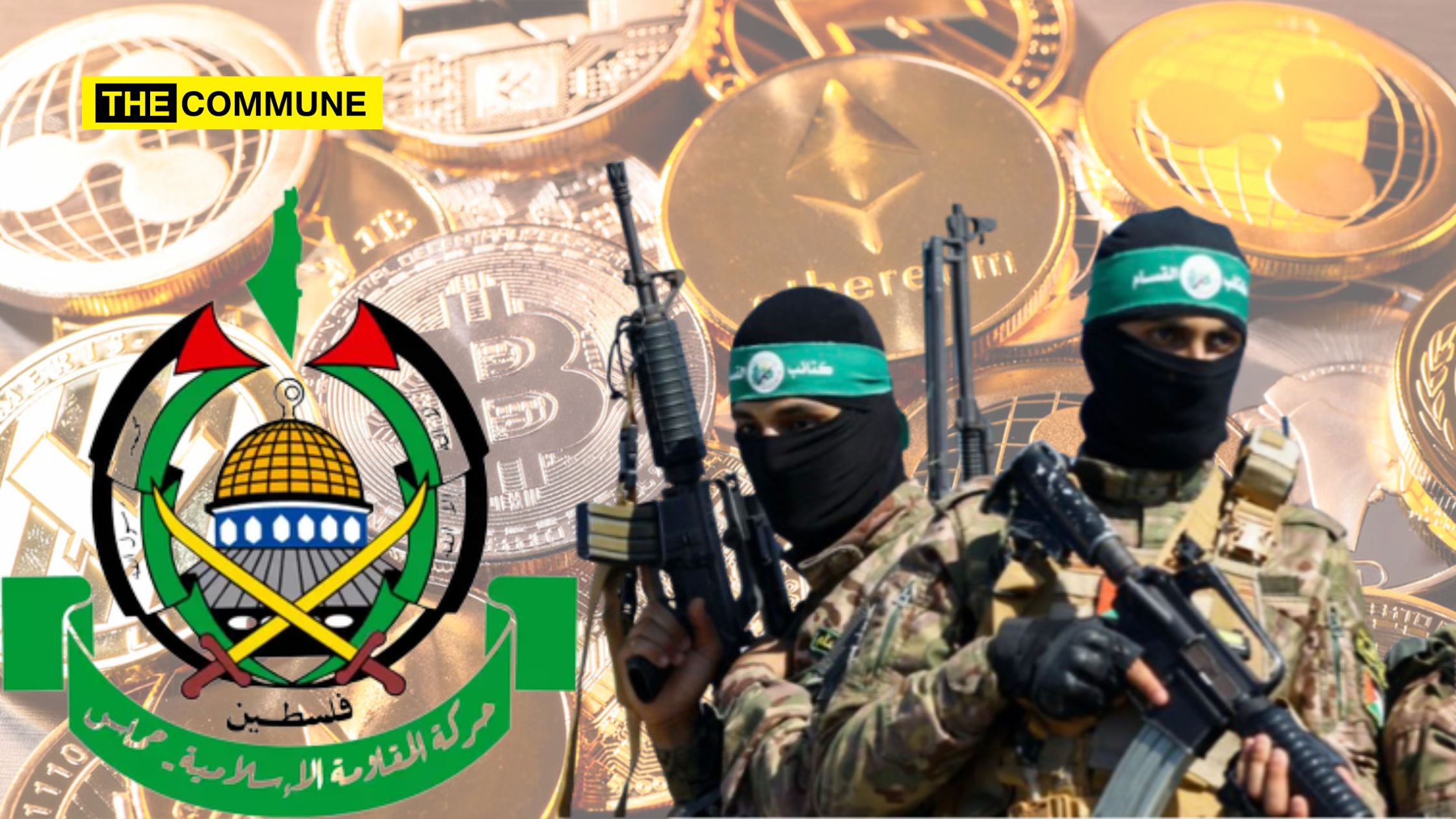
In the complex landscape of global terrorism, understanding the financial mechanisms behind organisations like Hamas is crucial for effective counterterrorism efforts. This article delves into the multifaceted funding streams of Hamas, shedding light on overt and covert sources, cryptocurrency involvement, taxes, and humanitarian aid.
Context
Gaza, plagued by a 47% unemployment rate and 80% living in poverty, faces the paradox of being home to one of the wealthiest terrorist groups. Hamas’ annual military budget falls within the range of $100 million to $350 million. In 2014, Forbes dubbed Hamas as such, with an estimated annual turnover projected to reach $1 billion over the next decade.
How Is Hamas Funded?
Hamas obtains funding through various channels. These include:
- Hundreds of millions in international aid to Palestine, possibly routed to terror
- Overt and covert injections of cash from Iran and other ideological partners
- Cryptocurrency, taxes, extortion and smuggling
- Revenue through its assets, estimated to be worth hundreds of millions of dollars, with companies operating in Iran, Sudan, Algeria, Türkiye, Kuwait, Malaysia, the United Arab Emirates, and other countries
- Hedge fund, investment fund operatives working for Hamas
Let’s analyse each of these.
Cryptocurrency
Between August 2021 and June 2023, Hamas received $41 million in cryptocurrencies, as reported by Tel Aviv-based crypto analytics and software firm BitOK. The Palestinian Islamic Jihad (PIJ), whose militants collaborated with Hamas in an attack, also obtained $93 million in cryptocurrencies, according to findings of London-based crypto researcher Elliptic. An analysis by Elliptic revealed that the al-Qassam Brigades, Hamas’ military wing, received millions of dollars in cryptocurrency transfers, including bitcoin, the stablecoin tether, and even Dogecoin. Authorities managed to seize 150 cryptocurrency accounts associated with the laundering of funds to and from Hamas, as stated in a DOJ news release. Apart from one-time transfer accounts for Hamas, almost all mass crypto accounts were brought to closure.
The flow of funds to Hamas in cryptocurrencies is the most visible and easiest to track, block, and seize. Because of the native qualities of public blockchains. (Thanks to chainanalysis). Cryptocurrency is far from being the primary source of funding. The United Nations estimates that cryptocurrencies account for 20% of terror financing in the world. However, it facilitates sourcing and recruiting people, which is far more dangerous.
Overt & Covert Sources
Iran openly allocates $100 million annually to the Hamas government, supporting both humanitarian efforts and defense projects. Additionally, Qatar is reported to have contributed over $150 million to Hamas in 2019, $100 million in 2020, and a substantial $360 million in 2021. Presently, Qatar is estimated to provide around $120 million each year, emphasizing its support for the Gaza government rather than endorsing terrorism.
The funds from Iran are believed to be funneled through financiers in Turkey and Lebanon, with a Lebanon-based financial operative serving as a middleman between Iran’s Islamic Revolutionary Guard Corps and Hamas. This operative collaborated with the Lebanese group Hezbollah to facilitate the transfer of funds.
Further, Iran utilized Russian companies to supply oil to Syria in exchange for financial support sent from Syria to Iran’s Islamic Revolutionary Guard Corps, subsequently reaching Hamas and Hezbollah. Between 1995 and 2001, the Holy Land Foundation for Relief and Development served as the primary U.S. fundraising arm for Hamas, channeling over $12 million during that period.
During a critical period in 2007 when Hamas faced instability and a lack of government funds after winning elections, Qatar emerged as a crucial source of financial aid. In an effort to prevent a humanitarian crisis, Qatari officials transported millions of dollars in cash through Israel’s Erez border crossing into Gaza from 2012 to 2021, with the permission of the Israeli government, contributing a total of $1.49 billion. In 2021, Israel and Qatar reached a new agreement that concluded the practice of physically delivering cash in suitcases.
Taxes
In December 2020, the reported tax revenue for the overall State of Palestine (West Bank and Gaza) amounted to $3.316 billion, according to CEIC data. This figure, however, appears disconnected from the region’s GDP, production, or exports, with the primary sources of tax being import and income.
Hamas, in addition to official taxes, imposes unofficial fees on smuggled goods and other activities, generating an estimated annual income of up to $450 million. The terror organisation also collects up to $15 million annually from taxes imposed on goods entering Gaza from Egypt.
The existing tax landscape includes a 16.5% additional tax on imports from the West Bank. As reported by the finance ministry of the Hamas movement, the total monthly collections from these taxes amounted to an additional $20-25 million USD.
Despite international aid to Gaza approved by the UN and Israel, particularly from Iran, Hamas’s handling of the funds is contentious. While the aid is intended for the public’s welfare, Hamas allegedly distributes the money to the public while simultaneously imposing hefty taxes on goods and services. The concern is that these funds may be diverted from public welfare to support terrorist activities rather than the well-being of the people.
Assets And Investments
Trend GYO Real Estate Investment Trust boasts a net worth of USD 542 million and generates an annual revenue of $87 million. Notably, Musa Muhammad Salim Dudin, a member of Hamas’s Political Bureau based in the West Bank, openly supports the organization. Following the designation of Trend GYO as a banned company by the U.S. Treasury Department’s Office of Foreign Assets Control (OFAC) in 2023, Dudin transferred ownership to other parties, disavowing any connection to Hamas. However, these funds were allegedly used to acquire weapons for Hamas, contributing to deadly terrorist attacks.
Al Rowad Real Estate Development, with an estimated net worth of $30-50 million USD, has connections to Abdelbasit Hamza Elhassan Mohamed Khair (Hamza), a Hamas financier based in Sudan. Hamza has facilitated funds for Hamas through a network of large companies in Sudan, Algeria, and Turkey, totaling $20 million. OFAC designated some of these Sudan-based entities in a May 24, 2022, sanctions action targeting Hamas’s investment portfolio. Hamza also has historical ties to terrorism financing, including connections to al-Qa’ida and companies linked to Usama bin Laden in Sudan.
Buy Cash, an entity lacking known website references or revenues has been identified by OFAC as a platform used to transfer funds for affiliates of terrorist groups, including Hamas, al-Qaeda, and the Islamic State (ISIS). Based in Gaza, Buy Cash facilitates cryptocurrency fundraising efforts for Hamas and serves as a point of exchange for various donations.
Operatives linked to Hamas own shares in several companies, primarily in the real estate and mining sectors across the Middle East and the Mediterranean region. The companies involved include:
- ITQAN REAL ESTATE JSC
- AL ROWAD REAL ESTATE DEVELOPMENT
- AGROGATE HOLDING
- SIDAR COMPANY
- ANDA COMPANY and
- TREND GYO
The valuation and number of shares held by these operatives suggest a potential worth in the billions of dollars.
The overall terror financing network of Hamas involves approximately 832 individuals and 373 organizations operating in 33 different countries, according to information provided by the National Counterterrorism Financing Team (NBCTF).
Humanitarian Aid
The UN Relief and Works Agency (UNRWA) in Gaza oversees a broad range of humanitarian efforts, including support for food, education, and medical assistance, providing a $100 monthly aid per family. However, both civilians and individuals associated with terrorist groups receive this aid, and there is a lack of a clear program to discontinue support for targeted terror elements.
Since President Biden assumed office in 2021, the United States has allocated approximately $1 billion to UNRWA. With 38 percent of UNRWA’s budget directed towards Gaza, this equates to $380 million in taxpayer funds delivered to the region in less than three years, raising concerns about the funds potentially falling into the hands of Hamas.
Israel has issued over 18,000 work permits to Palestinians, resulting in an influx of approximately $2 million per day and providing additional forms of economic relief.
UNRWA requires $1.8 billion annually to sustain its operations, covering schools, hospitals, clean water, and food for the people. Funding primarily comes from Europe and the United States, with the U.S. contributing $380 million annually. The European Commission has announced an “urgent review” of the €681 million in development assistance allocated by the EU over the past three years to ensure that the funds have not inadvertently supported Hamas. Up until 2022-23, India has contributed $36 million to Palestine through UNRWA.
Counter-terror-financing efforts
In a targeted effort against Hamas, 150 cryptocurrency accounts have been blocked. The U.S. Treasury has blacklisted shell companies associated with Hamas, abruptly ceasing banking engagements with them. Furthermore, there is a call to enhance data collection on humanitarian aid, specifically focusing on how it is allocated and spent.
Established in 2017, the Terror Financing Targeted Council (TFTC) is headquartered in Riyadh and serves as a collaborative platform for government officials from its member countries. Comprising Bahrain, Kuwait, Oman, Qatar, Saudi Arabia, the United Arab Emirates, and the United States, the TFTC aims to collectively devise strategies to reduce the flow of funds to terrorist organizations and combat money laundering more broadly.
Last Word
In the contemporary landscape, warfare demands financial resources, and sophisticated avenues for securing funds from governments, like-minded cohorts, and crowd-sourced funding have emerged. Technology is a double-edged sword that serves both legitimate and opposing purposes. In our interconnected global economy, every nation aspires to access international trade, yet achieving transparency remains an elusive goal. The lack of global cooperation becomes a breeding ground for anti-social elements to exploit and source funds. While technology has significantly reduced the gap and provides swift insights into the flow of money, it alone cannot comprehensively address this issue.
Soundar is a geopolitical enthusiast, based out of Ireland. His areas of interest include cyber, technology and its role in geopolitics.
Subscribe to our channels on Telegram, WhatsApp, and Instagram and get the best stories of the day delivered to you personally.




